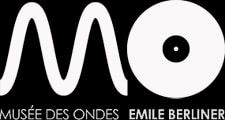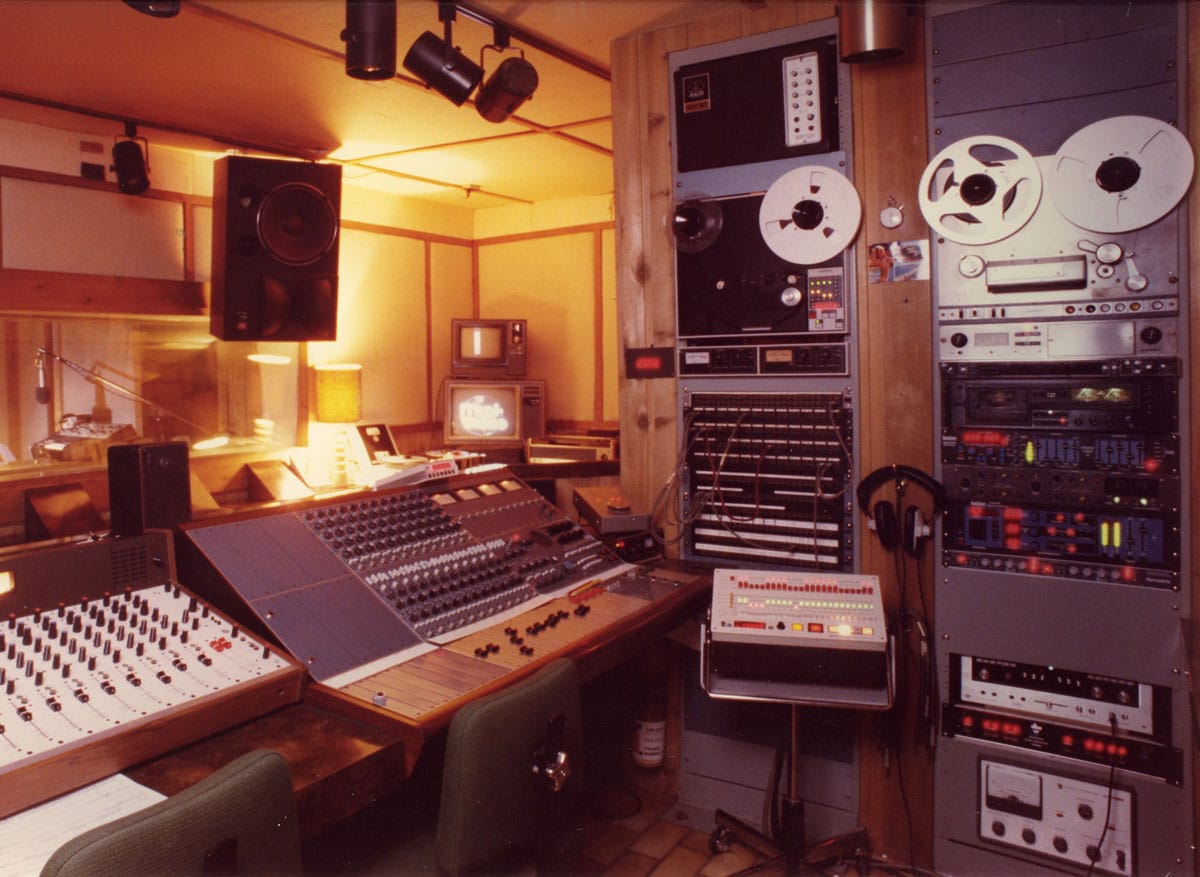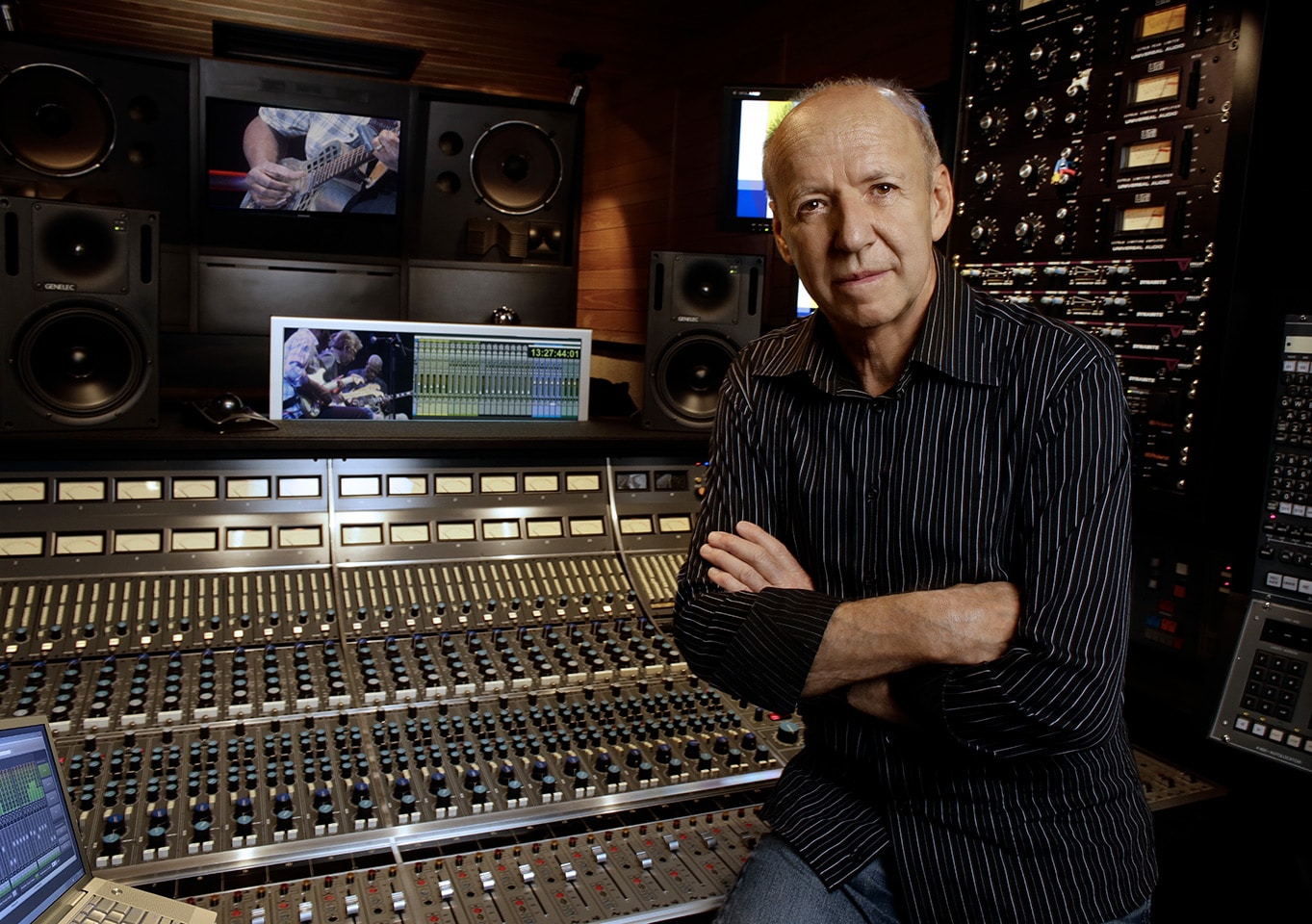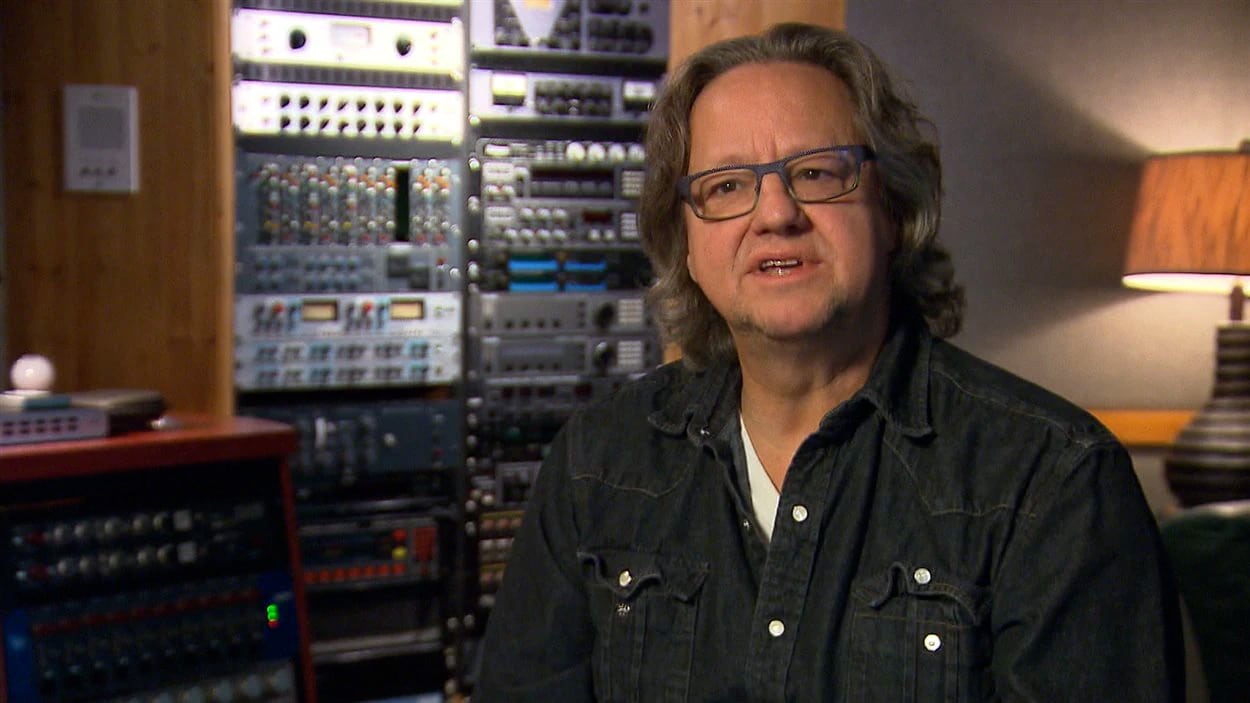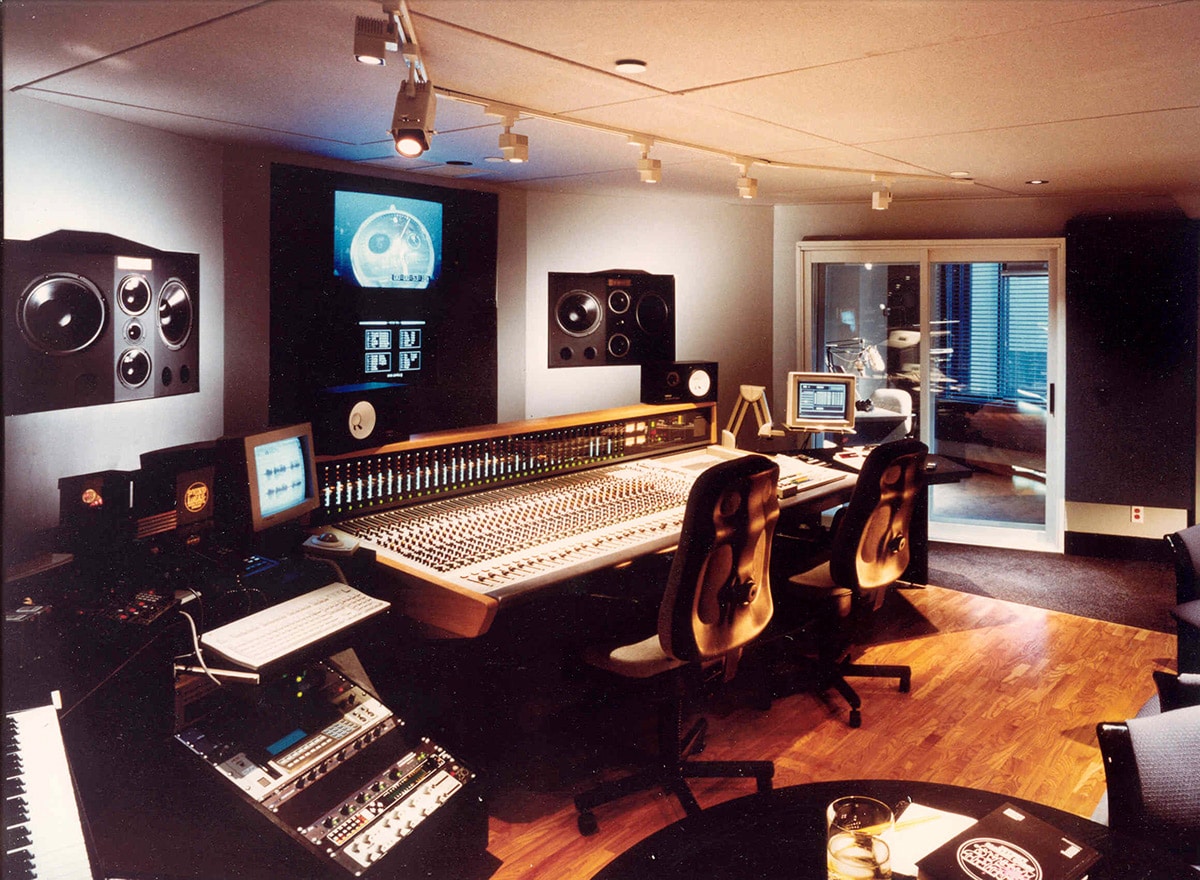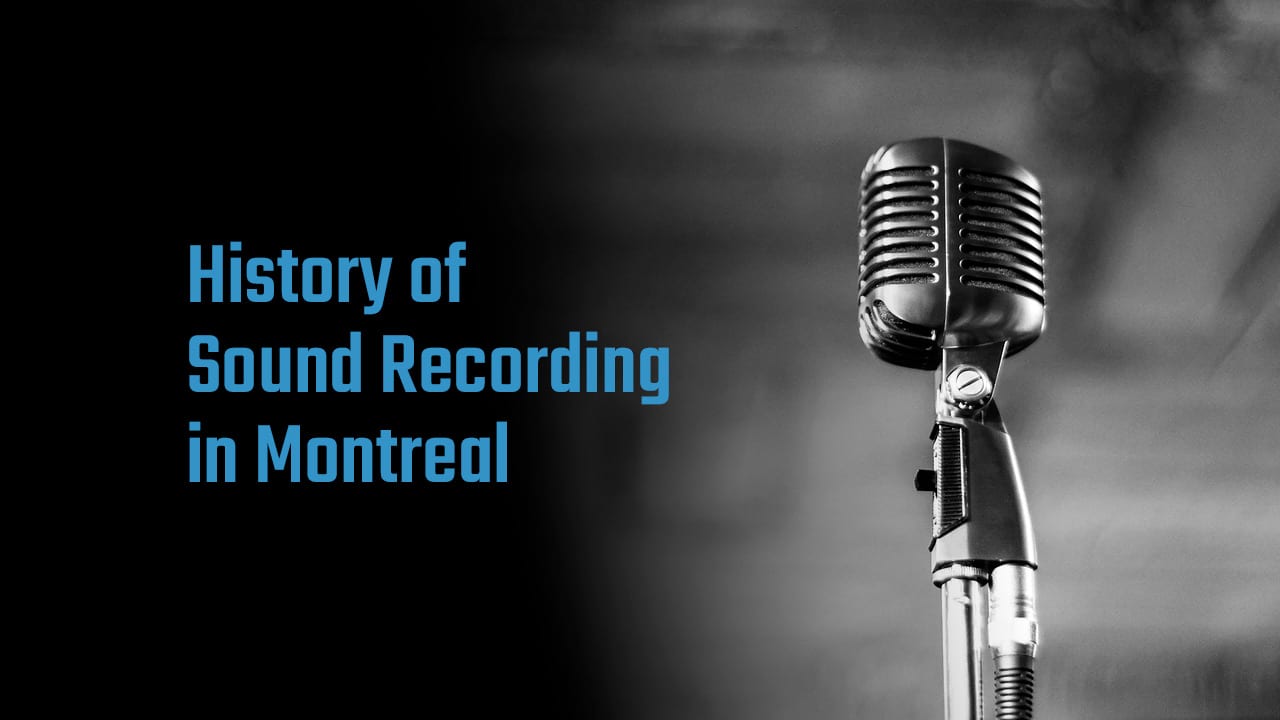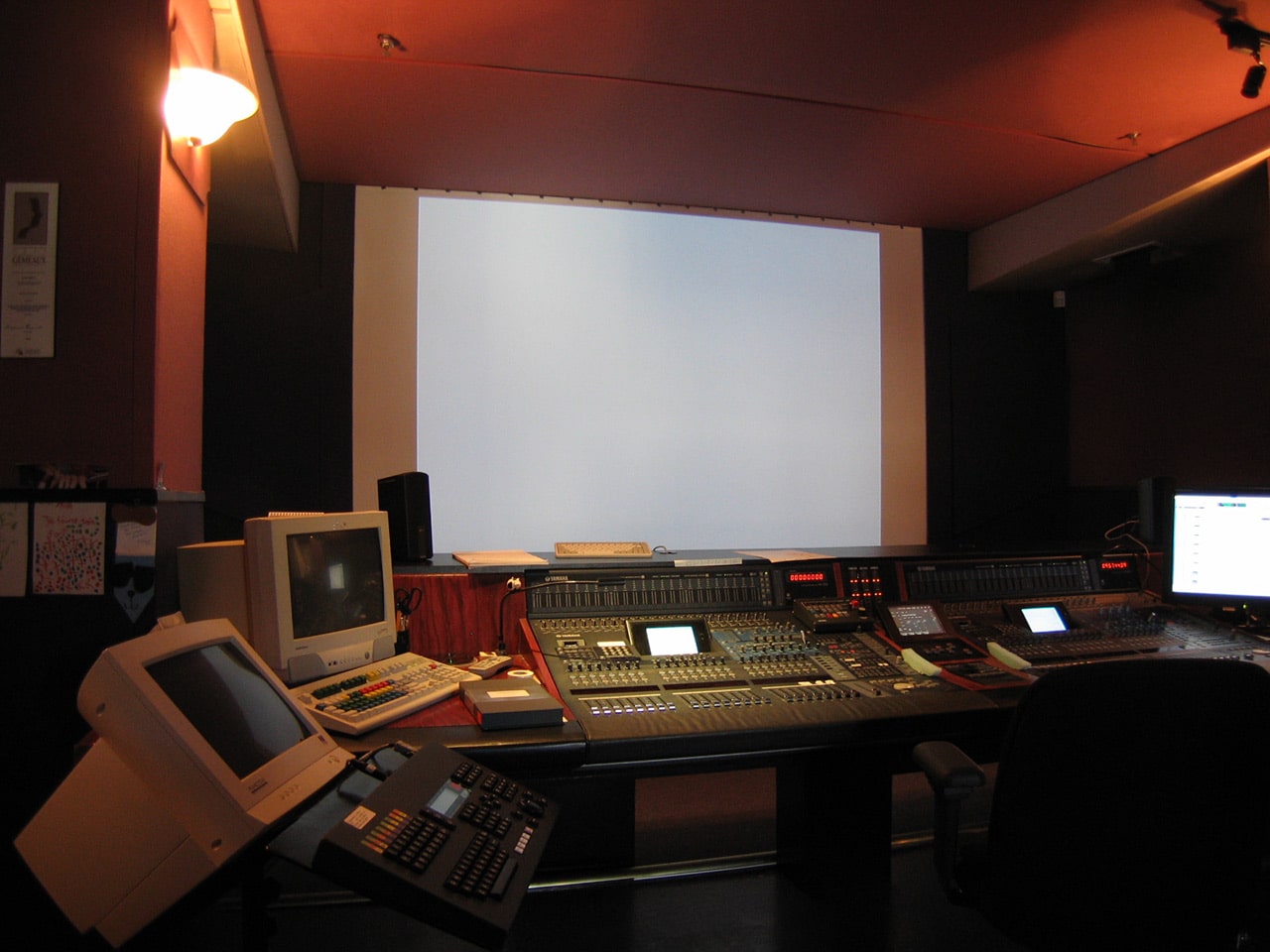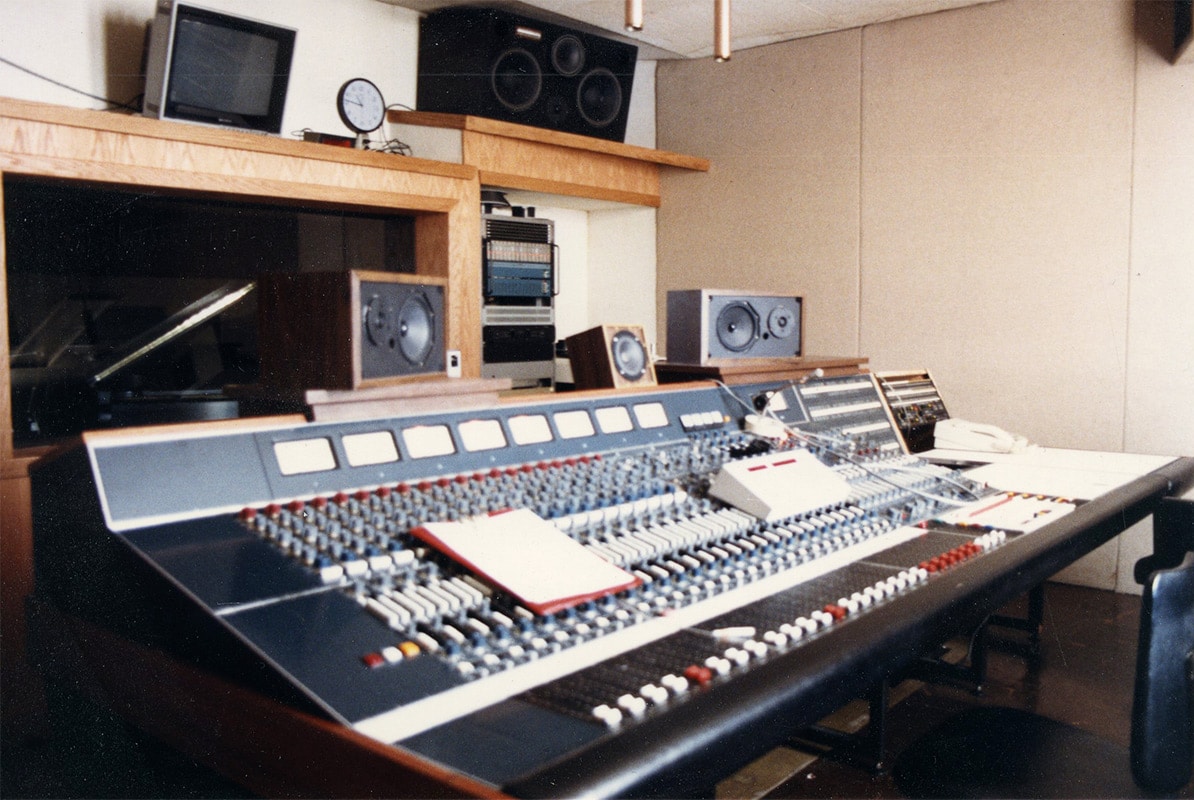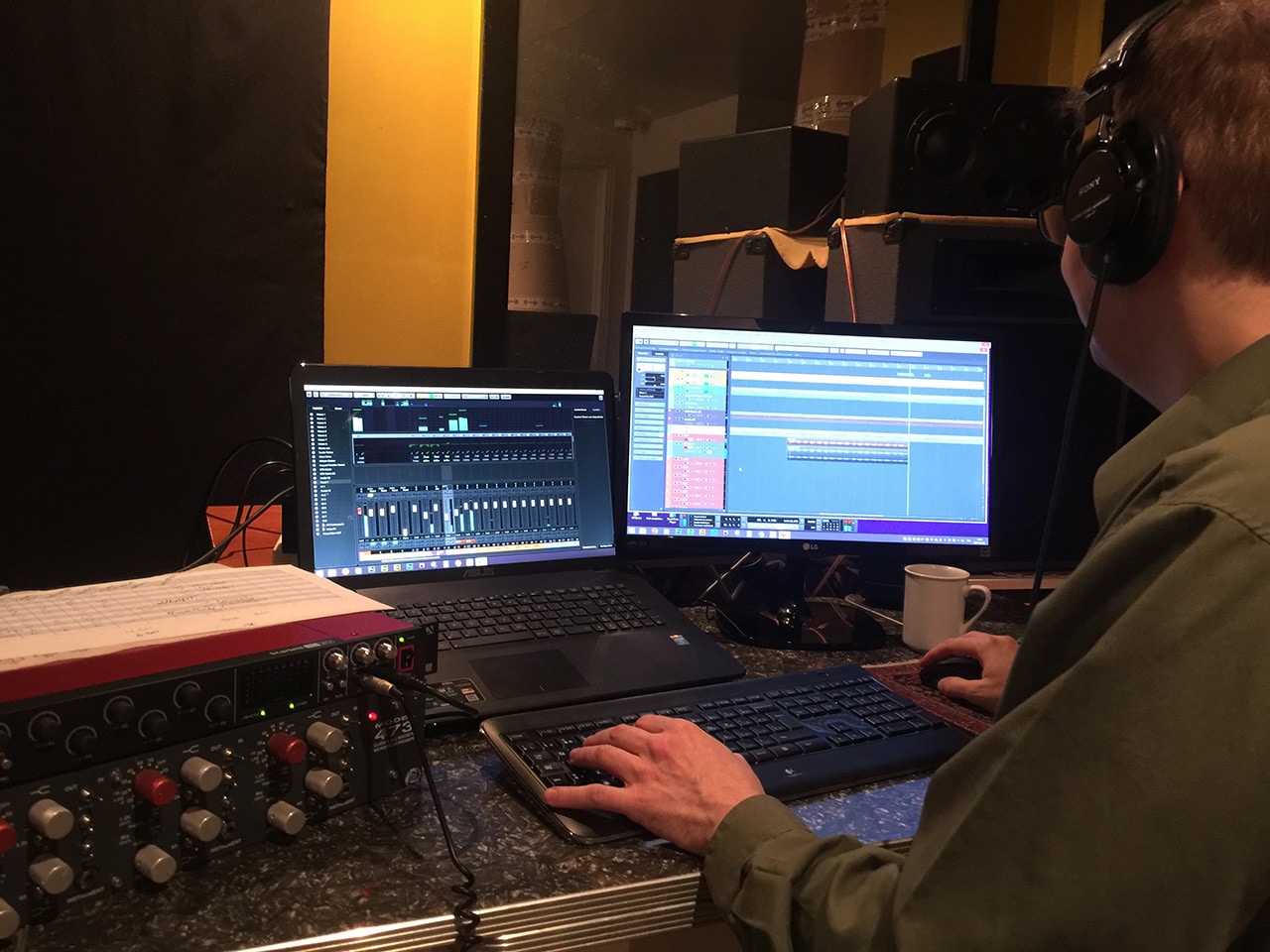History of Sound Recording in Montreal
This virtual exhibition was created to pay homage to all those who have participated directly or indirectly in this fascinating story.
Text written by Timothy Hewlings.
Integration by François Pilon.
If you think that you can contribute documents or archives in order to improve this exhibition, do not hesitate to contact us.
When Studio Tempo opened its doors in 1972, it became Montreal’s second state-of-the-art installation, designed by Tom Hidley of the world-famous Westlake Audio of Los Angeles. It boasted custom Westlake monitoring and a 24 input Neve console from England. It was also equipped with an MCI 16-track recorder and Dolby Noise Reduction. In the first years, under the leadership of Technical director Tom Montgomery and chief engineer Michel Lachance, and later on Ian Terry, it was dedicated to staying at the forefront of technological advances. Studio Tempo was owned by three partners – musicians Yves Lapierre, Bernard Scott, and François Cousineau, and was on the top floor of a building […]
Read moreMichel Fontaine built a great reputation at Studio Marko for ten years (1963-1973) but in late 1973, he decides to take the biggest gamble of his life. That is to leave his mentor Jean-Marc Audet and start his own recording studio. Studio Fontaine is born and settles right away at 1110 Bleury Street 4th Floor, downtown Montreal. This was possible with the help of good friends and financial backers like: Jacques Proulx (1935-2013) famous morning man at “CKAC” radio and prestigious French news anchor Jean-Paul Nolet (1924-2000). Studio Fontaine begins operating in late 1973 and from the start enjoys great success. Mr. Fontaine had cultivated great relationship with all the […]
Read moreGuy Charbonneau 1945 – today Guy Charbonneau is a pioneer in the sound recording industry. He is passionate, genuine and unpretentious. He was born in 1945 in Rigaud, Quebec. Filtronique 1969 – 1974 By 1969 he was operating a cutting-edge audio store, Filtronique. A business based on Lajeunesse Street in Montreal. This is where it all started. “My story begins in 1973, when a well-known Montreal radio station (CFGL which is then operated by Jean-Pierre Coallier) came to my high-end audiophile store to ask for advice on recording a TV show. live music. I not only supplied the equipment, but then recorded over 50 shows for Canadian radio and television. […]
Read moreText written by: François Pilon: François Pilon Gaétan Pilon (1955 – today) Sound engineer and producer, he was born in Saint-Henri, Montreal. He studied at Vincent d’Indy. Son Soleil (1977-1985) In a basement in 1977, the house studio Son Soleil was born. Three young entrepreneurs Gaétan Pilon, Gérard Brunet (Junior) and François Pilon are developing their skills in the field of recording on rue De Monts in Ville-Émard. They will start by acquiring 2 TEAC A-3340 4-track recorders, then move on to a TEAC Tascam 80-8 8-track recorder and finally acquire the 24 track MCI JH24 from Studio Tempo. All this in a few Months. As a console the small […]
Read moreJean-Luc Louradour, ing. ETS (Suisse) Specialist in electronics, electro-acoustics and acoustical design Monsieur Louradour obtained the degree of “ingénieur technicien ETS en électrotechnique” from the École Technique Supérieure in the Canton of Neuchâtel, Le Locle, in Switzerland in 1972. He immigrated to Canada in 1974 and, since that time, has worked in the areas of electronics for the professional audio industry, as well as the acoustics of recording studios both in Canada and in the United States. In 1984 he founded Normatrol inc, a company originally devoted to the development and manufacturing of automated controllers for solar heating systems. M. Louradour ’s interest and expertise in high quality audio eventually […]
Read moreThis chapter of the virtual exhibition is dedicated to sound engineers. These are the ones who have worked to achieve the best recording sound quality. Thanks to them and their wise advice, many artists have been able to have the best possible rendering of their creation.
Read moreThe field of cinematography is one that also progressed following the rhythm of technological advancements, including some that were directly related to sound recording. The invention of the Blatnerphone, in 1929, made it possible to magnetically record cinematographic sounds on steel wire. In 1934, John A. Maurer developed a sound recorder for optical film. It used sprocketed 16mm film that could be synchronized to picture and edited along with it using a Moviola. In the 1950s, magnetic film recorders allowed sound editors to directly edit the synchronized sound on Moviola and Steenbeck editors without having to carry out an optical transfer. In 1951, the Swiss company Kudelsky introduced the Nagra […]
Read moreAt the end of the 1960s and throughout the 1970s, as young sound engineers came into their own, many new enterprising studios appeared on the Montreal scene. Denis Pantis During the ’60, he began to produce the first francophone rock’n’roll records ever produced in Quebec. In 1962, he met Michèle Richard and produced the “Twiste avec Michèle” album, which sold over 100 000 copies. In 1964, Pantis introduced the Jeunesse label under which were produce Gilles Brown’s “Ce soir” and the Classels’ “Avant de me dire adieu”, among other great songs In 1965, Pantis created Télédisc, which regrouped the Bel Canto, Sultans, Bel-Airs and Mersey’s, César et les Romains, the […]
Read moreIn 1981, Sony introduced its first Pulse-Code-Modulation (PCM) recorders: the PCM-F10 and the portable PCM-F1 digital audio recorders. These reasonably priced machines allowed the recording of digital audio on any standard videotape format, from Beta to VHS to U-matic. Other systems, including the processes developed by Decca and Soundstream had preceded them, but the technology was proprietary and prohibitively expensive. Later, Sony introduced several refinements in the PCM-701ESD (1983); the PCM-601ESD (1985) and the PCM-501-ESD (1987). These machines became instantly obsolete when the Digital Audio Tape (DAT) recorder was introduced in 1987. The DAT machine, at a cost of about $7,000 compared to about $30,000 for a tape recorder, soon […]
Read more- « Previous
- 1
- 2
